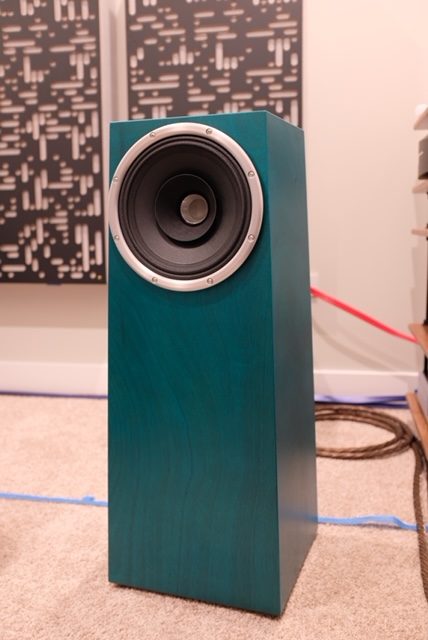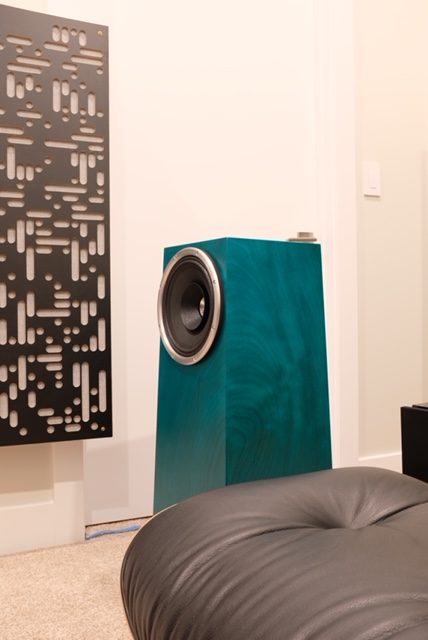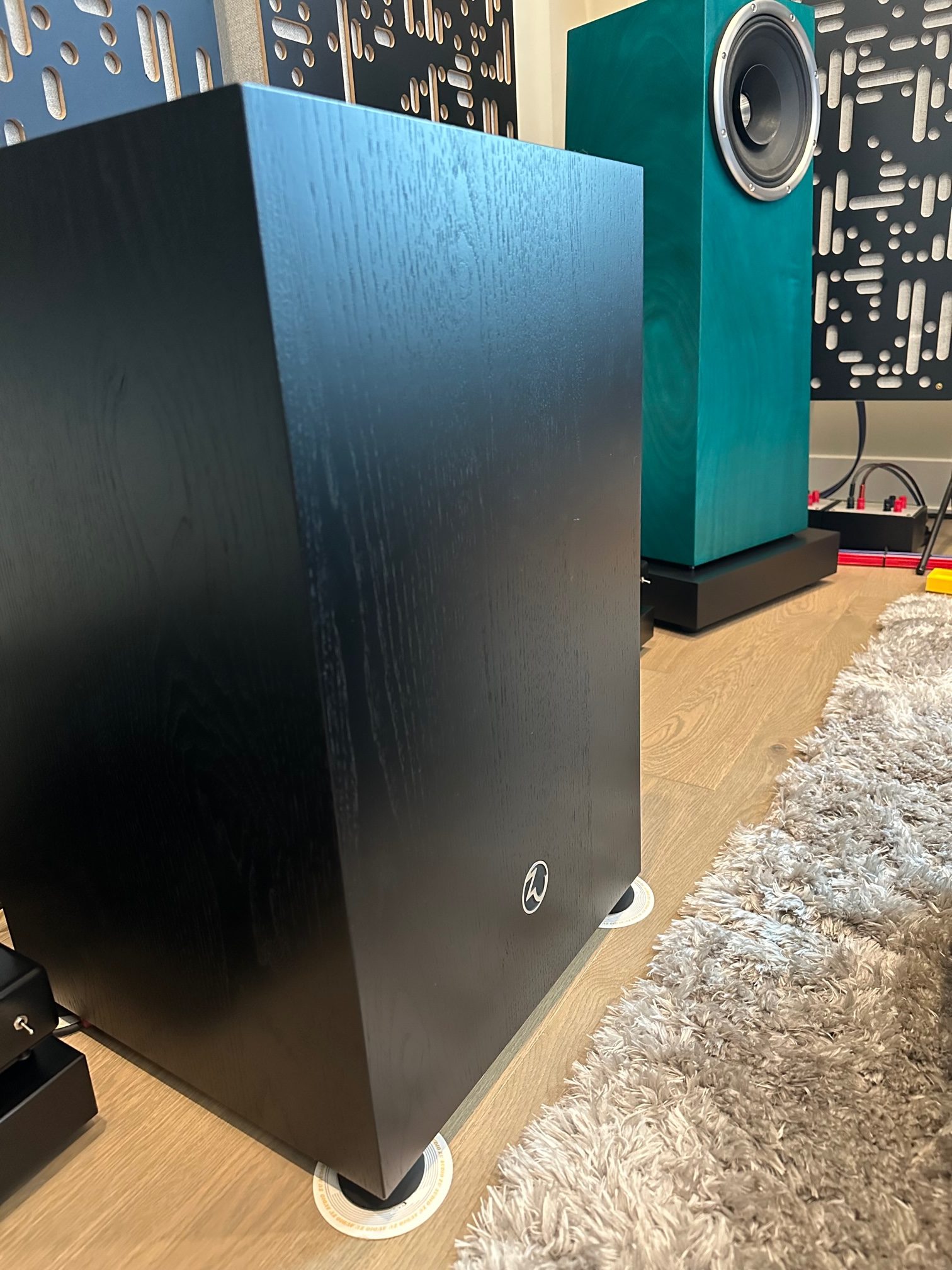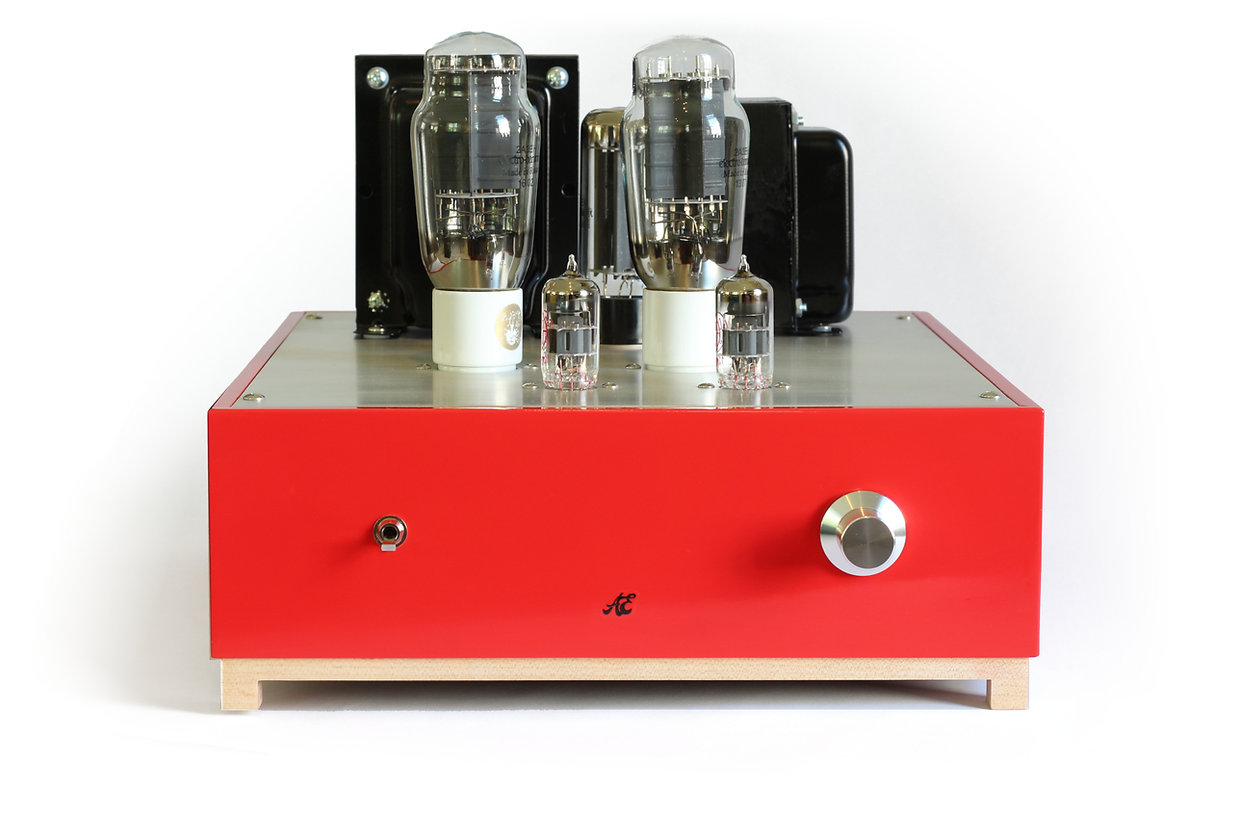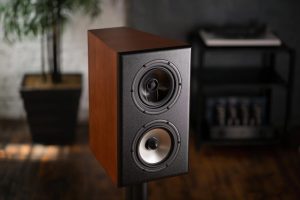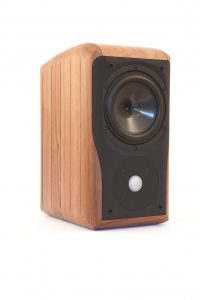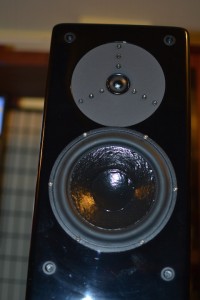There are few times in my life where I have been truly speechless when it came to audio equipment. I still remember the first time it happened. I searched high and low for a pair of Anthony Gallo Reference 3.1s. I had never heard the speaker, but I had read enough to know that if I could find a lightly-used pair I wanted to own them. This was in 2013, and I believe this speaker was discontinued back in 2005, so finding a pair in near mint condition was not easy. When the first pair arrived, sadly they were not in great shape, one speaker did not work correctly, and both speakers were damaged from poor shipping and packaging. However, I connected that single working speaker, just to see what it sounded like, and my jaw hit the floor. The detail, the texture, the bass, everything was simply worlds better than what I had heard previously. Two months later, I finally found a pristine pair of Gallo Reference 3.1s and they are still the center piece of my home theater.
Zu Audio's Soul VI is the first speaker since 2013 that made my jaw drop. It did so immediately, right out of the box, and it continues to do so with every listen. To be clear I am not comparing the Soul VI to the Gallo Reference 3.1, but instead comparing the initial reaction. The important difference though is the Reference 3.1 was the first piece of real HiFi equipment that I had ever owned, and as such the reaction was more reasonably expected.
By comparison, today, the Soul VI is one of the least expensive items in my listening chain and is just one of many high-end speakers that I have had the pleasure and privilege of listening to and yet I was left once again with the same feeling from 2013. The feeling of unlocking something truly special and rare, the feeling that I was about to hear music in a new, more visceral, and more exciting way then I had ever heard it before. Let's talk about why.
What is the Soul VI?
The Soul VI is a speaker that walks the line between delivering uncompromising HiFi sound, while also being design and house friendly. It targets audiophiles, their families, and people who appreciate timeless lines and a furniture quality attention to detail and finish.
Like Soul and Soul MK II, the Soul VI keeps the same footprint and size profile. The result is a speaker that can fit in any room, whether it's my 10 x 10 listening room, or my 20 x 30 living room. It is relatively light weight at just under 50 pounds per speaker, and due to its size, I am easily able to lift and move them as necessary.
Unlike the previous Soul models (and current production Zu speakers except Druid VI), the Soul VI is manufactured from okoume instead of MDF. Okoume is a hard natural wood and is one of many changes that brought the Soul from upper entry level in Zu's line to a line leading product, only bettered by the Druid VI and the imminent Definition VI. Okoume was chosen by Zu for its density and rigidity and allowed them to build a more inert cabinet. This, along with the newly designed super structure for the cabinet is a big part of why the Soul VI sounds so clear and life-like.
The cabinet material and structure are not the only changes, Zu has designed and built a new 10-inch full range driver that clearly has resulted in significant improvements over their previous driver. They are also employing the new Eminence N151M as a super tweeter which extends farther then their previous flagship super tweeter, the Radian 850. The result is exactly what Zu was going for, more detail, more nuance, and "better cymbal rides" as Sean Casey would say, while maintaining the tone and texture that Zu is known for.
I had the pleasure of speaking with Phil Ressler, a long time Zu customer who has become the company's spokesperson and business adviser. He described the Soul VI as a speaker for the design conscious audiophile. My wife (who is very much not an audiophile) could not agree more, when I first unboxed the Soul VI, and revealed its stunning teal finish, she simply said "Wow these look awesome." To be clear she has never said that about any other speaker. Over the past few months, we have entertained multiple friends, some into audio, some not, and all of them have had the same reaction, with one friend even saying, "I need to ask my fiancé why our speakers don't look like this." Phil and Sean really tried to maximize the Soul VI to appeal to this crowd, they knew that a design-conscious user would not always be able to optimally position the speaker, and that off-axis performance would be really important. The Soul VI sounds good no matter where you stand, it images from anywhere. I even got a clear image when I was off to the right of the right speaker. Spots within my listening room that have been unlistenable with every other speaker due to reflections and poor off axis responses, are enjoyable with the Soul VI. For design-focused audiophiles, or for audiophiles that have to create mixed use spaces, the flexibility around placement is a true-life saver and puts this speaker in a unique class of its own.
The finish of the speaker itself is truly a sight to behold, and the photos on Zu's website do little to prepare the buyer for the true treat they are about to receive. Zu's website accurately depicts the color of the speaker but, what is not as clearly shown in the photos is the incredible graining of the wood that comes through the color, and the character it creates. Every person who has seen these speakers, immediately walks up and touches them, both confused and delighted by the way they look. Our housekeeper, who has not once commented on a single speaker in our home, spent an hour and half raving about the look and color, and on her next visit brought her son specifically to show him the color of the speaker.
Phil also filled me in on some special design elements of the driver. The Soul VI uses a dual concentric driver (the super tweeter is mounted into the center of the 10 inch driver). Sometimes this configuration causes an issue though, where the magnetic properties of the tweeter conflict with the magnetic properties of the main driver. This can result in audible artifacts; however, the Soul VI's tweeter is mounted in such a way that the magnetic fluxes of both drivers are never in conflict with one another. To Zu's knowledge, the Soul VI is one of a very small set of loudspeaker drivers designed and built to do this. Zu also developed a special self-damping and durable adhesive to attach the super tweeter to the main driver, further reducing mechanical noise between the two transducers.
The Soul VI was also carefully designed to preserve as much of the main driver's energy as possible. This is done by carefully structuring the speaker cabinet using hardwood materials, and shaping the cabinet in a way that naturally controls the energy. The results of this design work can be heard in the way this speaker presents large dynamic shifts. The energy seems boundless, and when you hear the sound and then look at the speaker you are left scratching your head about how something so small and compact could produce something that sounds as big and as clear as what you are hearing.
Zu's Full Range Driver Technology
Zu approaches speaker design in a way that is oddly familiar to me, because it is similar (but still quite different) than the way the Anthony Gallo designed the Reference 3.1s. Zu speakers do not employ a crossover. The idea is that the full range driver truly runs full range, handling the vast majority of the audible spectrum till about 12kHz. This means most instruments and the human voices all emanate from this main 10-inch driver. The result is a level of coherence that just does not exist on other speakers with more traditional multi-way speaker designs.
Some of you may say, "well this sounds like a single driver approach. Why is there a tweeter?" First, Zu calls their tweeter a super tweeter, because while most tweeters crossover between 2kHz and 3kHz, Zu's tweeter only does the heavy lifting starting at about 12kHz on. The crossover point is simply the natural roll off of the main driver, and a high pass filter on the tweeter to ensure the tweeter takes over for the full range driver at the right frequency. For those who have heard single driver speakers, you may notice that they can sound a little flat. This can normally be explained by an early roll off of the single driver as you approach 20kHz. The super tweeter employed by Zu maintains a lot of the single driver mid-range magic and cohesion but fixes its early roll off extending well past 20kHz.
Placing the Speaker
I already discussed this above, but it is worth noting that these speakers are much less sensitive to room placement then I am used to. I did not find that their presentation changed much when placed near walls or when placed free standing into a room. Of course, these speakers cannot defy the laws of physics, but nearly all changes in placement resulted in changes mostly measured bellow 60Hz.
In my room, I placed the speaker about 3 feet from the back wall and about 12 inches from the side walls, this placement was dictated by other structural elements in my listening room. The next thing I did was adjust the Griewe gap. The Zu-Griewe technology functions as an acoustic impedance matching scheme that allows the main driver to better match the room's impedance. When properly set, it produces smooth and clean bass and affects the sound well up into the mid-range. When incorrectly set it can make the speakers sound bloated or thin. This gap is not a traditional port, and in the case of the Soul VI is located at the bottom of the speaker. Setting the gap is more or less setting the distance from the ground to the bottom of the speaker. Zu has a write up on this technology as well as how to set the gap correctly on their website, and I suggest any owner or potential owner of a Zu speaker go familiarize themselves with how to properly set the gap, as setting this incorrectly is incredibly noticeable. I have a carpeted floor, so I started with the recommended gap of 10mm, this proved to be the correct gap. I also tried lowering the gap to about 7mm, which made the speaker sound very light in the mid-range. It may have been slightly faster, but I clearly had lost an entire octave of bass, which measurements later confirmed. Changing the gap to be about 15mm, produced a speaker that was very bloated and was missing bass detail as well as lower mid-range detail. I tried many values in between 7mm and 15mm and eventually landed on 10mm being correct for my room.
With the speakers positioned, I had a relatively smooth response from 20kHz down to about 60Hz. At 60Hz my room has a bass mode, and most speakers in my room fall off pretty strongly at 45Hz, including the Soul Supremes. The Soul VI achieved -3dB down to about 40Hz (excluding the bass bump at 60Hz which matches the performance of some of the best speakers I have ever had in this room. Saying this differently, while a subwoofer can add extra impact and depth if properly setup, the Soul VI does not need a pair of subwoofers to sound their best. I have spent nearly 45 days of my 90-day review listening to the Soul VI without subwoofers and only felt the need to try the speaker with a subwoofer, because I owned two subwoofers, not because I felt that there was an actual need for them.
Matching the Soul VI with my REL S510s was a relatively easy process. After connecting the subwoofers, I did a few measurements with REW, and then dialed in the RELs to fill in that last 10Hz from 40Hz down to 30Hz. Ten more minutes of volume level matching, and by ear adjustments left me with a first-class audio experience that stretched from 25Hz – 20kHz. While I do enjoy the Soul VI more with a subwoofer than without (after all who doesn't like a thunderous bottom end) the rest of this review is written without the subwoofer turned on. I do not believe a subwoofer is necessary for this speaker and wanted to make sure my review properly reflected this.
Amp and Equipment Matching
The Soul VI is a very good and very transparent speaker. With an 8 ohm impedance and a sensitivity of 100dB/w/m this speaker reads on paper as a perfect match for single ended triodes. While I agree that it is a good match, I actually would argue that the Soul VI performs better with more powerful amplifiers that are capable of linear delivery and fast voltage/current swings.
During my time with the Soul VI I tried a variety of amplifiers including a few single-ended triode amplifiers (2 - 6 watts), an 80-watt solid-state amp, the ampsandsound 45-watt Zion mono blocks, and my differentially balanced 500 watt solid-state mono blocks. These amplifiers range in cost from $200 - $24,000. All pairing worked, they were different, and each gave me a sense of how transparent the speaker was.
Below is a quick breakdown of a few of my amp pairings ordered from best performing to worst performing with some notes about the overall sound quality:
- ampsandsound Zions: The Zion monos are a modern take on the Harmon Kardon Citation V, and put out about 42-watts of tube push pull power per channel. This the best amplifier I currently have, and is the best amplifier I have ever heard. It matched perfectly with the Soul VI and produced an effortless and full sound from top to bottom.
- Emotiva XPA - 1L: These Emotiva mono blocks produce 250-watts of class AB power into an 8 ohm load and have a 30-watt class A mode. While some in the audiophile world are not a fan of Emotiva, the XPA - 1L is an exceptional amplifier that is both quiet and transparent. This was my second favorite combination. I gave up a little bit of smoothness and lost some depth in my sound stage. However, I gained a massive amount of dynamic force which made its presentation very entertaining.
- ampsandsound Nautilus: 8-watts of pure class A single ended triode tube power. The tone of the Soul VI was deep and thick. However, the speaker still retained its speed. The top end became butter smooth, and the bottom end loosened but still procured smooth and extended bass.
- Emotiva Base X (50-watt stereo): This is the cheapest amp that I have access to, and while it performed well it was very clear that the Soul VI was missing out in all areas of its overall performance. Saying this differently the Soul VI needs nicer equipment in-front of it to show off what it can do.
The important takeaway from the list above should be that if you put high end equipment in front of the Soul VI, the Soul VI will reward you with a truly exceptional sound. Personally I would not buy the Soul VI if I planned to connect it to a vintage receiver or lower end consumer gear. It will work, it will sound okay, but I really do not think it's the right speaker for this use case.
The Soul VI's transparent nature was not only noticeable with amp pairing but it was also noticeable with cabling. Coming from the headphone world, I am no stranger to the idea that cables can and do make a difference, but I had not heard a speaker system where the difference in cabling was so apparent. Whether it was interconnects or speaker cable, it was easy to hear the difference. For the remainder of this review, the Soul VI will be in a system using the ampsandsound Zion Monos and the Wireworld Eclipse speaker cabling and interconnects.
The Review System
All items below have been burned in for a minimum of 200+ hours before critical listening has begun. The Soul VI has been burned in for north of 400 hours, after already being burned in at the factory.
- Speaker: Soul VI
- Amplifier: ampsandsound Zion Monos
- DAC: DCS Rossini
- Power Supply: PS Audio P12
- Cabling: Wireworld Eclipse for interconnects and speaker cable, a combination of Wireworld and Wywires power cords
- Subwoofer: While I did test the Soul VI with my subwoofers, the review did not take this configuration into consideration.
How did the Soul VI sound?
Once I have a system dialed in, one of the first tracks I listen to is Alanis Morissette's "Reasons I Drink." I use this track because of the bass line and the way this track presents her voice. With the right system she will be presented center stage. The guitar and drum kit will be to the left and right of her and will be a little further back. The Soul VI delivered the centered vocals with ease, but it also introduced some nuanced movement to that image, as she moves around with the microphone. The image is stable, powerful, and incredibly believable. The electric guitar cuts through the music, with immediacy and grit, but it does so because that is the way it should sound. The Soul VI is just incredibly natural. However, for me the best thing I heard was the snap back of the bass. This song presents bass in a way that almost sounds like it snaps back. On a high-end headphone system, it is truly transformative, but getting speakers to present the bass in this way has been a challenge until the Soul VI. Where most speakers could deliver the initial impact of the bass, none up until the Soul VI arrived, were able to capture the snap back. If it is not clear, I am very impressed and it was this delivery that caused me to say that this speaker did not ultimately require a subwoofer to sound it's best.
Moving onto Carmen Gomes Sings the Blues in 192/24, which is easily one of the best recordings I possess, I am struck at the way the Soul VI presents cymbals. I could not only hear them vibrate but I heard the things around them, the pole, the foot pedal, the hand reaching up to quiet them. Never mind the fact that the cymbals had a sound that was so tonally correct, but so different from how other speakers present cymbals, that I was left wondering if cymbals really sounded that way (I did get a friend with a drum kit to bring his high hat over and we were able to indeed confirm that the Soul VI rendered the cymbals truly beautifully). The Soul VI with well recorded music though presents spaces that are huge and will layer out. It creates a believable world when you close your eyes, and its sound stage is so fixed and consistent that you really can trick yourself that you are moving into different spaces with every track.
An example of a song that engulfed the listener in space that felt as tall and as wide as the room was "You Better Hide" from Yello on A Touch Yello. This song starts with thunder cracks, that when properly presented fill the entire space both in front and behind you. It renders the singers voice front and center, and the backing drums float in the space, making a noticeable splash with each impact. I wish I could tell you the Soul VI disappointed, but like above, it really delivered this track with flying colors and sounded better than I had heard it previously. Throughout the review period several people would come into my listening room and comment on how small the Soul VI appear and questioned if they were really capable of filling the room with articulate and clean sound. Anyone who expressed disbelief in my answer would listen to this song, and by the end of the song they would simply stare at the Soul VI, both confused and amazed. It really is that kind of speaker.
Dynamics are another area where the Soul VI simply delivers. I listened to a personal favorite track of mine, "Same to You" off of Melody Gardot's Live in Europe album (the bonus release). I love this album. The complexity of the stage, the live nature of the performance, the audience, and the array of backing instruments. This song (and album) has these moments of dynamic explosion, her voice quickly changing from soft and quiet to singing into the microphone with all her energy. The Soul VI really delivers this dynamic experience, at no times did I feel like the speaker was not keeping up with the song, and even at crazy high volumes the sound stage never collapsed.
I could keep going, but honestly, I did not find a single song that the Soul VI was not able to present with stunning technical abilities. Even Sofi Tucker's Wet Tennis, a super fun dance pop album came alive with the Soul's providing great bass and a deep foundation to build on top of.
Wrapping up
I am left truly speechless when I think of how to describe the Soul VI to friends and audiophile colleagues. I want to tell people it is the perfect speaker; I also want to be transparent and say that I have not heard every speaker in the world so my ability to say it's the "best" or "perfect" is nonexistent. However, they are easily the best speakers I have ever heard in my home, and they give me the same warm and fuzzies when I listen to them as I get when I listen to speakers like the Wilson Audio Sasha and the B&W 800 Diamonds in an acoustically treated dealer listening room. I did not have either of these speakers in my house so I can't provide a direct comparison, but the fact that I get the same feeling, the same level of satisfaction, when literally nothing has done that before tells me how good these speakers sound.
The Soul VI has my highest recommendation. If you have a formal living room that you want to add a high end two channel system to, the Soul VI should be on your list. If you have a listening room that is on the smaller side, and you want a set of speakers that will show you everything and still be fun, the Soul VI should be on your list. If you want excellent sound, at a comparatively affordable price, that will scale with your stereo system into the $60k - $80k range then the Soul VI should be on be on your list. Thank you Sean, Phil, and the Zu Audio team. I liked the Soul VI so much that I bought it. I can't provide a better recommendation than that.
Soul VI Loudspeakers
Retail: Starting at $5995 a pair
Zu Audio





